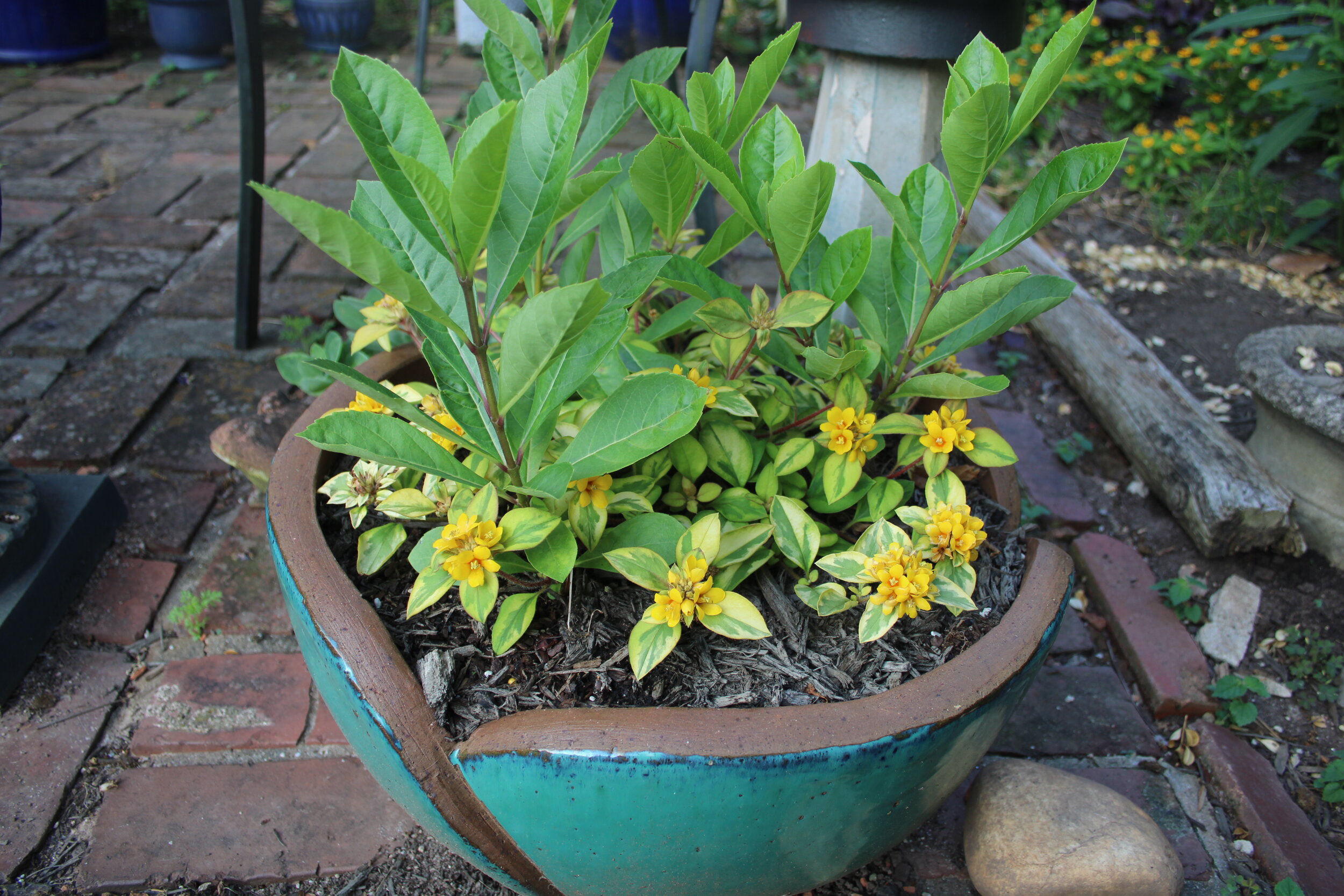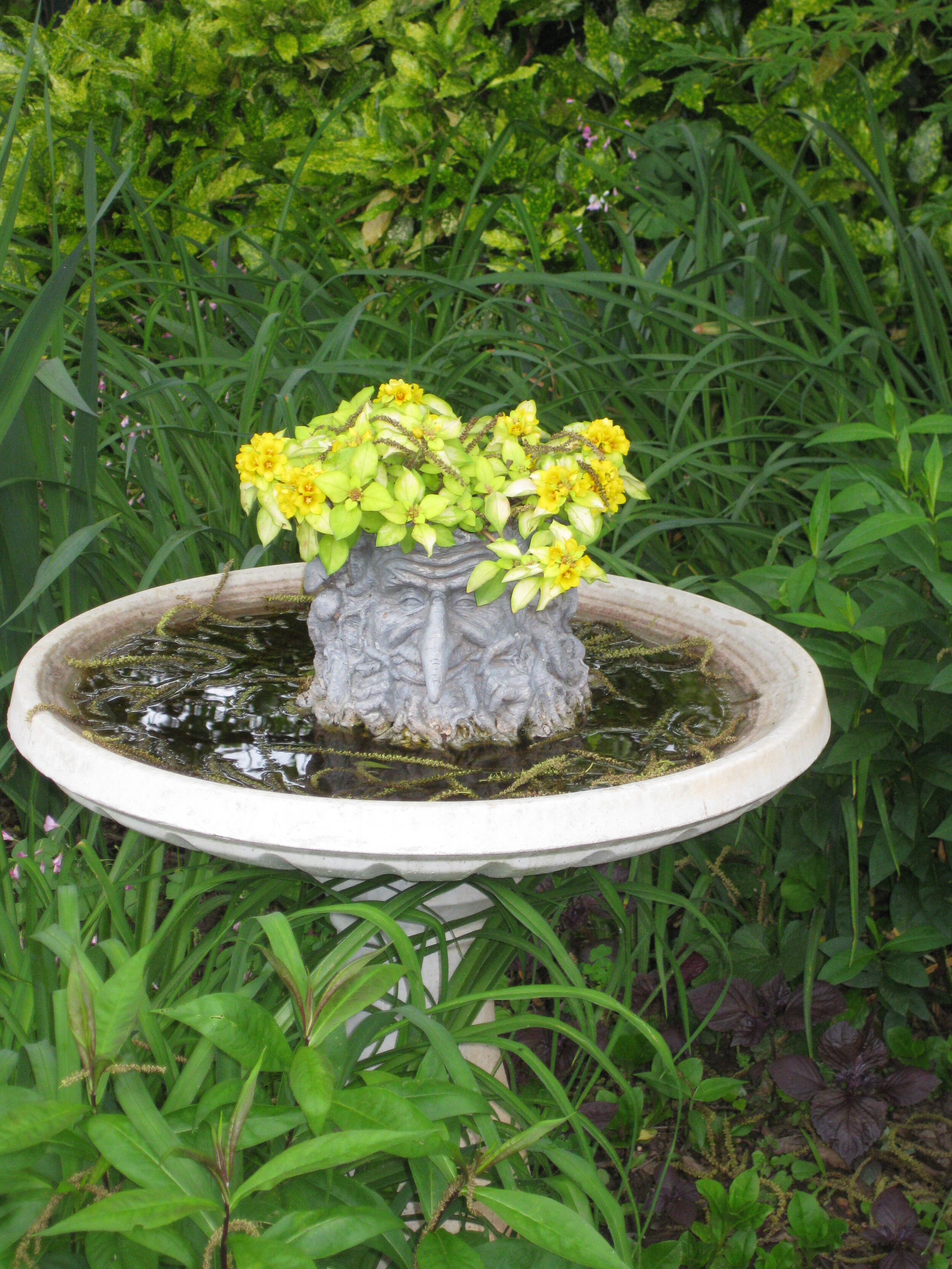A good groundcover is like the piece of lettuce under a serving of chicken salad on a luncheon plate. It makes the star of the meal look better without drawing attention to itself. Groundcover plants do not receive as much attention as shrubs, annuals, or perennials. They just do their job, providing an under-dressing to feature plants while spreading to cover bare soil, reducing erosion, and shading out weeds. One that defies tradition and draws attention to itself is Lysmachia nummularia ‘Aurea,’ widely known as Creeping Jenny.
Creeping Jenny will grow in sun, part shade or even mostly shade. Its bright chartreuse hue makes its neighbors look better by contrast. Leaf color will be more golden in areas with bright sun and more lime green in areas with mostly shade. It will spread vigorously, and is considered invasive in some states. If this concerns you, plant it where it is restrained by walkways or metal edging. The vines grow almost flat (three inches or less) and form roots wherever stems touch soil. This rooting habit means they can bounce back from occasional damage from foot traffic or pets (like the black kitten in the accompanying photograph). It will drape over walls like a chartreuse curtain. Plants rarely grow upward more than an inch or two, so there is no concern about it creeping up trees. If the plant grows outside its intended area, the fine stems are easily pruned with a pair of utility scissors.
Lysmachia nummularia ‘Aurea’ (lis-uh-MAK-ee-ah num-ew-LAH-ree-uh, but internet sources offer multiple suggested pronunciations) tolerates heat and humidity. It looks best when grown in rich soil with moderate moisture. It will grow slower in lean soils and with less moisture. The vine-like mat is perennial in zones 3 through 8. Winter cold may make some of the leaves shed or take on a reddish hue, but it recovers quickly with the return of warm weather.
Creeping Jenny can be used in containers, either as a single specimen in a hanging basket or in a mixed planting, where it will cascade over the rim of the planter. It looks especially nice at the edges of water features and makes a good partner to upright sedges and ferns. If you choose to pair this one with a variegated plant, choose a companion whose variegation color is in the yellow family (as opposed to white or ivory). It complements most flower colors (pinks, reds, oranges, purple) but does not play well with yellow flowers. Creeping Jenny rarely blooms. Its small, golden flowers are easy to miss against its foliage.





